#2021 yukon
Explore tagged Tumblr posts
Text

Rent GMC Yukon in Dubai
#2021 car rental Dubai#2022 car rental Dubai#2023 car rental Dubai#2024 car rental Dubai#7-seater car rental Dubai#8-seater car rental Dubai#9-seater car rental Dubai#car rental Dubai#family car rental Dubai#GMC Yukon#group car rental Dubai#SUV rental
0 notes
Text


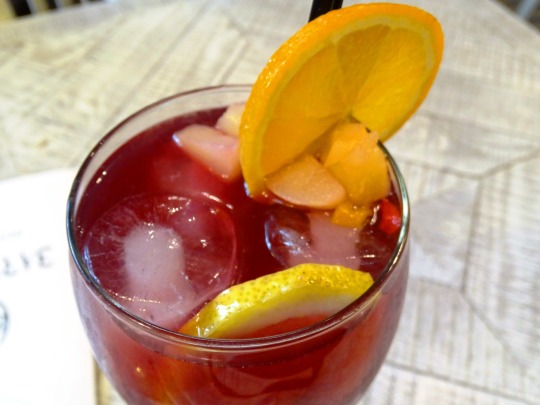


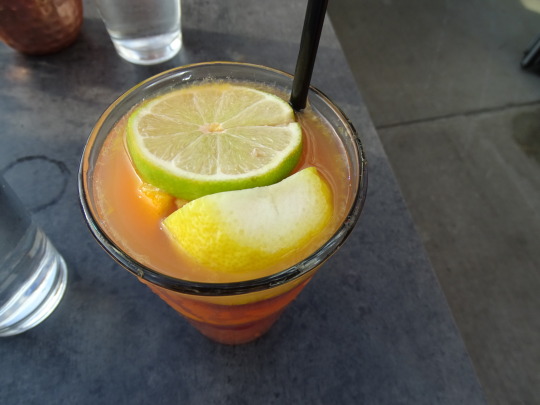
National Sangria Day
It’s hard to think of many things that could be better than a day dedicated to wine!
National Sangria Day is the perfect excuse to meet with friends and sample the delicious, fruity drink that is one of Spain’s claims to fame in the area of the culinary arts. Make sure that this National Sangria Day really packs a punch this year with celebrations, friends, and loads of fun.
History of National Sangria Day
Each year, more and more people are visiting Spain for its rich heritage and culture of food. Over 2,000 years ago, when the Romans inhabited the area, they knew the water there was unsafe for drinking because of bacteria, and so it was common to fortify it with alcohol to kill it off. In this case, necessity became the mother of invention, and many people’s lives are all the better for it.
The first sangrias (whose name comes from Sangre, or blood, and refers to its dark red color) were likely heavily watered down mixes of wine and water, as well as herbs and spices. Basically, the Romans added anything they could to kill off the bacteria in the water and to disguise the taste of mediocre table wine.
Wine-making and, thus, sangria-making flourished for some time in Spain. Then, during the 700s, the Spanish wine industry floundered when the Islamic Moors took over. It wasn’t until almost 800 years later, when the Moors were conquered) that Spaniards were again able to freely enjoy their sangria-making activities again.
By the 18th and 19th centuries, Sangria became popular in England and France, using French grapes. Then, in 1964, with the influence of the New York City World’s Fair, Sangria was introduced to the wider population in the United States and the Americans have had a taste for it ever since.
Expressions of Sangria have tended to change over time. Variations usually center around the type of fruit, the presence or lack of carbonation and the kind of spirits added if any at all. While all fruits can be used, the key is to use fruit that’s in season in order to underline the flavor of the drink, and also the type of wine being used.
Today, by European law, in order to be given the label “Sangria”, the drink must be made in either Spain or Portugal and be low in alcohol–less than 12% by volume.
Sangria has become an ancient and much-loved tradition. And, even though it originates in Spain and Portugal, it is certainly enjoyed worldwide today. It can be served as an iced outdoor treat in the summer, or as a great way to warm up indoors in the winter.
How to Celebrate National Sangria Day
Celebrations for National Sangria Day are pretty straightforward: gather some friends, pour everyone a glass, then kick back and enjoy the true taste of summer (even if it happens to be winter in the northern hemisphere)! Other ideas for celebrating the day include:
Enjoy a Glass of Sangria
While it might need to be made in Spain or Portugal to officially have the name “sangria”, that doesn’t mean the spirit of this drink can’t be enjoyed elsewhere! Try ordering it at a Mexican restaurant, picking some up at a local liquor store, or even making your own. It’s a great drink to pair with seafood dishes, Thai, spicy Mexican food or even with a plate of cheese. Sangria is great because it is fairly cheap, certainly fruity and definitely delicious!
Try a Hand at Making Sangria
There are practically as many recipes for sangria as there are drinkers of the fruity punch, and a lot of delightful sangria recipes you should try. But the most common ingredients for almost any sangria are wine, fruit, honey, and sugar.
The recipe can be adjusted to suit any taste, however: sparkling water can be added to give the drink more fizz, and fruit can be kept out of the glasses using a strainer. Some of the fruit can even be mashed or grated and then stirred into the wine to give it an extra-rich flavor.
So while citrus and berries are the most popular choices for sangria, also consider peach, pineapple, mango, melon, and even apples. If possible, try to let the fruit marinate in the wine a day ahead, or at least a few hours before serving, to get the most of the natural flavors the fruits add.
Brandy is also commonly used in sangria to jack the alcohol content up a little, but you can add a few shots of your favorite liquor instead, or a splash of orange juice combined with a liqueur such as Triple Sec.
For those who would like to add bubbles, consider soda water or citrus-flavored soda pop (Spaniards would probably have heart attacks if they knew how you were perverting their drink with Sprite, but what they don’t know doesn’t hurt them). Some sangria lovers add honey or sugar as well.
While connoisseurs say it’s important to use a good quality red wine such as Rioja to get the authentic Spanish flavor, many agree that you should just choose something you like. Inexpensive wines are perfect for this drink–after all, masking the taste of cheap wine is exactly how sangria came into existence in the first place!
Make a National Sangria Day Playlist
Wondering which tunes are best to enjoy while drinking that sangria? Create a fun playlist on Spotify or another music hosting website that will help enjoy the fun and fiesta of the day. Get started with these songs, and then add a few more favorites to round it out:
Sangria by Blake Shelton (2015). Country music lovers will appreciate this song by this famous singer/songwriter who is married to Gwen Stefani.
Sangria Wine by Jerry Jeff Walker (1973). Head back a few years to this folk, laid-back song that sounds like it was recorded on a back porch while drinking a pitcher of Sangria!
Red Sangria by Jordin Sparks (2020). A more recent release, this one features this pop star who won American Idol as a teenager–and now she’s proving she’s still relevant at over 30 years old.
Sangria Wine by Pharrell Williams and Camila Cabello (2018). Depending on the type of party it is, this one might not make it onto the playlist (if grandma is on the guest list), but the tune certainly has a low-key, sangria-drinking vibe. Even if the lyrics do have a double meaning.
Source
#National Sangria Day#NationalSangriaDay#20 December#Sevilla#Spain#not too sweet#original photography#restaurant#travel#vacation#España#red wine#orange#ice cube#summer 2021#tourist attraction#indoors#don't drink and drive#national day#I usually don't drink Sangria#but this one wasn't too bad#mocktail#Whitehorse#Yukon#Canada#2023#Crangria
1 note
·
View note
Text

canadians specifically are so goddamn annoying when it comes to this shit i saw another one say “children don’t die in schools here” yeah they just find 200+ of their bodies buried under the schools up there! and people still smuggle guns in canada! you still have gun violence! stop using dead children to pretend like you’re a superior country when you have just as much violence, racism, and hate as the united states. instead of constantly comparing and gloating, try donating to the organizations made to try and stop future school shootings and violence against children from happening. and btw
In Toronto, Canada’s largest census metropolitan area (CMA), the proportion of violent crimes that were firearm-related (4.7%) was the second-highest among CMAs. Its rate of firearm-related violent crime (43.2 incidents per 100,000 population) rose 36% from 2021 and 93% since a low in 2013.
In 2022, the rate of firearm-related violent crime was 36.7 incidents per 100,000 population, an 8.9% increase from 2021 (33.7 incidents per 100,000 population). This is the highest rate recorded since comparable data were first collected in 2009.
All provinces and territories have seen the rate of firearm-related violent crime increase since the low in 2013. The largest increases were recorded in the Northwest Territories (+303%), Saskatchewan (+165%), Yukon (+149%) and New Brunswick (+126%).
179 notes
·
View notes
Text
According to the pacrim wiki, Coyote Tango was the first jaeger the program lost. By that time, Pentecost and Tamsin were not piloting anymore. It was June, 2016.
The order of pre-knifehead fallen jaegers is:
- Coyote Tango. Destroyed in combat against Itak. On its second set of pilots. June, 2016.
- Victory Alpha. Destroyed in combat against Raganarok. The pilots survived. July, 2016.
- Tacit Ronin. Abandoned because its pilots died of neural overload. July, 2016.
- Lucky Seven. Abandoned because one of its pilots was decommissioned. 2019.
Following this pic from the wiki:
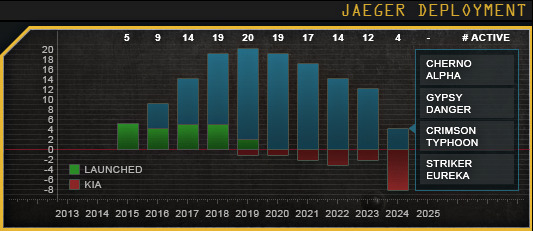
We know that the first jaeger was launched in 2015 (Brawler Yukon) and the last in 2019 (Striker Eureka).
The golden age of the jeager program was from 2017 to 2019, three years of gaining more than they were losing. The peak was in 2019, with 20 active jaegers. The bottom was in 2025, with no jaegers left.
2024 was the year with more deaths, with 8 j-pilots going KIA. Then 2025, with 7 deaths between the Double Event that killed both Cherno and Crimson, and Operation Pitfall, who claimed Pentecost and Chuck.
Between 2019 and 2023 there were 9 KIAs.
Which means Yancy was the first jaeger pilot to die on combat. It makes sense, given the reaction of Penecost to hearing that they had lost Gipsy's signal (and Yancy was dead).
It marks:
- 2019-20: 1 lost jaeger, 1 pilot KIA.
The list of fallen jaegers Post-Knifehead:
- 2020-21: 2 lost jaeger, 1 pilot KIA.
- 2021-22: 3 lost jaegers, 2 pilots KIA.
- 2022-23: 2 lost jaegers, 3 pilots KIA.
- 2023-24: 8 lost jaegers, 2 pilots KIA.
- 2024-25: 0 lost jaegers, 8 pilots KIA.
- 2025: 4 lost jaegers, 7 pilots KIA.
Let's compare all this info with the following Kaiju War Timeline from the wiki:
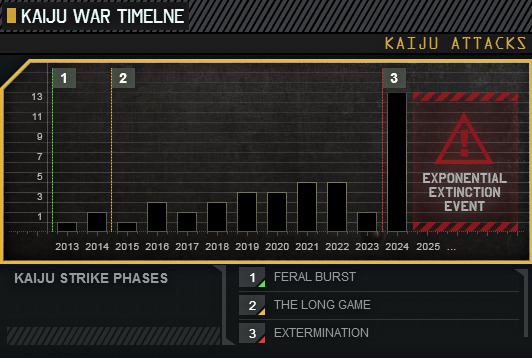
A) 2013-2014: The Feral Burst. There were no jaegers yet to defend humanity against the 3 kaijus that invaded the world.
B) 2015-2019: The Long Game, Part I. There were 24 jargers up around this period, with a total of 13 kaijus making contact.
Special mention to the Beckets, who got an impressive mark of 5 kills during those years. It means they helped killed more than a 1/3 of those bastards during the golden era of the jaeger program. For what I see, Raleigh is the only pilot who had ever abandoned the jaeger program because he wanted to, not because he was hurt or kicked out.
C) 2020-2023: The Long Game, Part II. The amount of kaijus who invaded in those three years equals the amount of kaijus who made contact within the first 6 years of the war. It means the precursos sent as many kaijus in half the time. Humanity went into this phase with 19 jaegers. By the end they had 4.
2024 reports 13 kaiju attacks. It makes sense that they lost 8 jaegers and 10 pilots more or less in that year. With 12 jaegers active, it is more than a 1vs1 situation. Something tells me that most of Striker Eureka's kills were during this phase.
Special mention to the Hansen, btw. *During Chuck active years, he participated in almost third of the kaiju killings that happened then. I don't know Lucky Seven's score in this race, but *Herc's win amount to a 1/4 of the whole kaiju fights during his active time.
*The count stops at Mutavore. It does not include the Double Event or Pitfall.
If we include Post-Mutavore but not their participation/assistant at killing Leatherback:
- Chuck: 11 kills, 35 kaiju appereances during his active career (almost a 1/3).
- Herc: 12 kills, 44 kaiju appearances (not counting 2016 and adding at least 2 kills of the Lucky Seven era; around a 1/4).
Yet again, if by statistics alone, Mako is the most winning jaeger pilot of the movie. In her active years there had been 5 kaijus and she has helped kill 4. It's worth mentioning that her debut was on a double event followed by a triple event, with the only Category-5 ever saw. Impressive, to say the least.
On the other hand, Raleigh has helped kill or killed himself almost half of the kaijus that had appear on his active years.
Here: (ratio is 19-20 kaijus, 9 kills).
- 2025: 6 kaijus, 4 kills.
- 2015-2019: 13-14 kaijus, 5 kills.
The Hansens record is impressive just in the sheer size of their killing count, which is still not complete given I don't have the info on Lucky Seven. Meanwhile, Raleigh and Mako are impressive for the efficiency record.
Of the 51 kaijus that invaded the Earth, Gipsy and Striker combine to 20 kills. That means 2/5 of the total.
The last three j-pilots hold the best or most insane records of the program. Herc with the most wins, Mako with the best efficiency and Raleigh fucking Becket who had solo piloted twice and explode a jaeger in another world.
#pacific rim#pacrim#pacific rim 2013#pacrim 2013#pacific rim worldbuilding#raleigh becket#chuck hansen#mako mori#yancy becket#hercules hansen#herc hansen#stacker pentecost#marshall pentecost#ppdc#pan pacific defense corps#j-tech#jaegers#ppdc records#jaeger program#driftwithme.referenceforfic#long post
111 notes
·
View notes
Text


Before We Disappear || Shaun David Hutchinson || 512 pages Top 3 Genres: Fantasy / LGBTQIA+ / Romance
Synopsis: Jack Nevin’s clever trickery and moral flexibility have served him well his entire life—making him the perfect assistant to the Enchantress, one of the most well-known stage magicians in early-twentieth-century Europe. Without Jack’s steady supply of stolen tricks and copycat sleight-of-hand illusions, the Enchantress’s fame would have burned out long ago—not that she would ever admit it.
But when they’re forced to flee the continent for America, the Enchantress finds a new audience in Seattle at the 1909 Alaska–Yukon–Pacific World’s Fair Exposition. She and Jack are set to make a fortune until a new magician arrives on the scene. Performing tricks that defy the imagination, Laszlo’s act threatens to overshadow the Enchantress and co-opt her audience. Jack has no choice but to hunt for the secrets behind Laszlo’s otherworldly illusions—but what he uncovers isn’t at all what he expected.
What makes Laszlo’s tricks possible is, unbelievably, a boy that can seemingly perform real magic. Wilhelm’s abilities defy all the laws of physics. His talents are no clever sleights-of-hand. But even though Laszlo and Wilhelm’s act threatens to destroy the life Jack and the Enchantress have built, Jack and Wilhelm have near-instant connection. As the rivalry between the Enchantress and Laszlo grows increasingly dangerous and dire, Jack finds he has to choose between the woman who gave him a life and the boy who is offering him love.
Publication Date: September 2021. / Average Rating: 3.87. / Number of Ratings: ~4490.
#tbr tuesday#I haven't read this yet!#before we disappear#shaun david hutchinson#500-599 pages#fantasy#lgbtqia#romance#jomp original
5 notes
·
View notes
Text
Manitoba New Democrats are promising to make the National Day for Truth and Reconciliation a statutory holiday in the province next year if they win Tuesday’s election.
Leader Wab Kinew says Manitobans should be able to participate, if they choose, in honouring and commemorating residential school survivors and the children who never made it home.
The federal government made Sept. 30 a statutory holiday for its workers and for federally regulated workplaces in 2021.
Other parts of Canada, including British Columbia and Yukon, have also made the day, more commonly known as Orange Shirt Day, a statutory holiday.
The Manitoba Liberals say they would implement the holiday within their first year in office if they form the government. [...]
Continue Reading.
Tagging: @politicsofcanada
#cdnpoli#Manitoba#NDP#Truth and Reconciliation#Indigenous persecution#Indigenous politics#residential schools
63 notes
·
View notes
Text
General Motors is recalling nearly 462,000 pickup trucks and big SUVs with diesel engines because the rear wheels can lock up, increasing the risk of a crash. The recall in the U.S. covers certain Chevrolet Silverado and GMC Sierra 1500, 2500 and 3500 pickups from the 2020 through 2022 model years. Also included are the 2021 Cadillac Escalade, GMC Yukon and Chevrolet Tahoe and Suburban. Documents posted Wednesday on the National Highway Traffic Safety Administration website say a transmission control valve can wear out over time. In rare cases it can fail and lock up the rear wheels. Drivers may notice harsh shifting before any wheel problems. GM says in documents that dealers will install new transmission control software that will monitor the valve and detect excess wear 10,000 miles before the wheels lock up. If wear is detected, the transmission will be limited to fifth gear, preventing wheel lockup, which happens when the transmission downshifts from eighth gear. GM will provide warranty coverage to fix transmissions that have a defective control valve. Owners will be notified of the recall by letter on Dec. 9.
6 notes
·
View notes
Text
National Wildlife Photo Contest: Bright Spots.
I picked the photos I liked best. Click/tap on the caption to see the others.
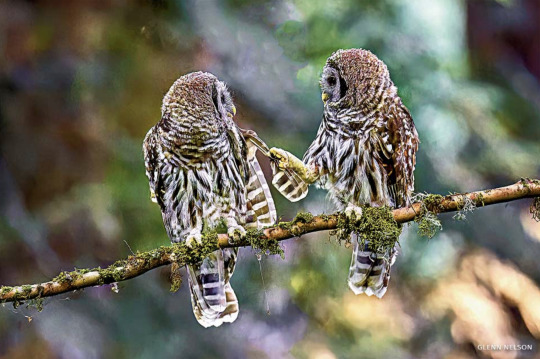
BABY ANIMALS, First Place, Glenn Nelson, Seattle, Washington.
Nelson identifies with these juvenile barred owl siblings, declared invasive in the Pacific Northwest. A lifelong U.S. citizen born in Japan, “my community was forcibly removed from about the same habitat [as the owls] for merely resembling the enemy during World War II,” he says. Nelson sees the owls, photographed in July 2023, as “charismatic fauna that open people to relationships with other beings and nature.”
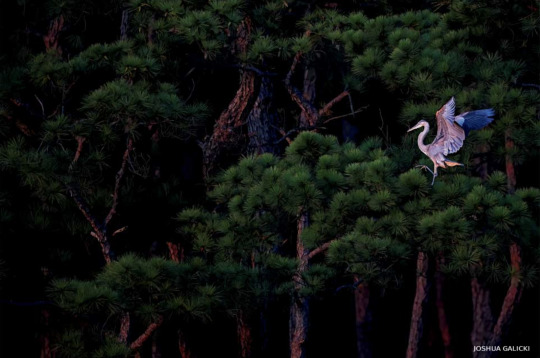
BIRDS, First Place, Joshua Galicki, Claiborne, Maryland.
Both Galicki and his subject, a great blue heron, were poised at the right place and the right time to preserve this moment of subtle beauty: Galicki from his kayak in a cove near his home on the Chesapeake Bay and the heron about to grasp a loblolly pine branch on shore. “The sun was setting, and a few last rays of light touched the heron at a fantastic angle,” he says of the July 2023 image.

LANDSCAPES & PLANTS, Second Place, Nancy Hajjar, Lone Pine, California.
The “beautiful swirling orange lenticular cloud” captured by Hajjar of Funchal, Portugal, in April 2021 only looks otherworldly. Lenticular clouds—formed by air flowing over high mountain ranges, such as California’s eastern Sierra Nevada—are frequently compared to, and sometimes mistaken for, flying saucers.
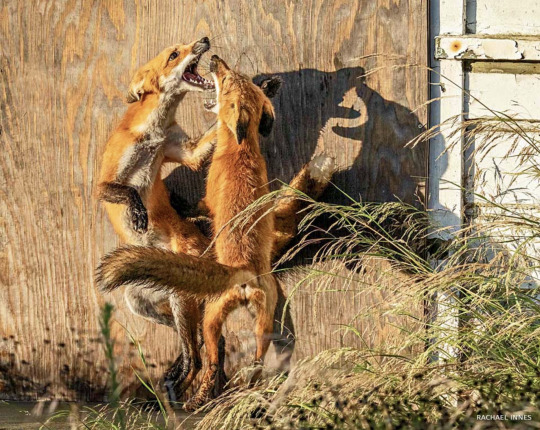
MAMMALS, First Place, Rachael Innes, San Pedro, California.
“I was fortunate to be able to follow an urban fox family from the day the kits emerged until they left to start their own lives,” says Innes of Torrance, California. In this August 2023 photo, she captured two red fox kits—and their shadows—playing at an old coast guard station in San Pedro, near the foxes’ cliffside den.

MAMMALS, Second Place, Donna Bourdon, Maasai Mara, Kenya.
Bourdon of Decatur, Tennessee, observed four days of wildlife river crossings in Kenya in September 2023, including a roughly 10,000-strong throng of wildebeests and zebras. “Once the first wildebeest made the leap of faith, the entire herd pushed forward, and there was no turning back,” she says. Above, a sole wildebeest faces her camera head-on, waiting its turn to ascend the far bank of the river, even as “the risk of being trampled and drowned is extremely high.”
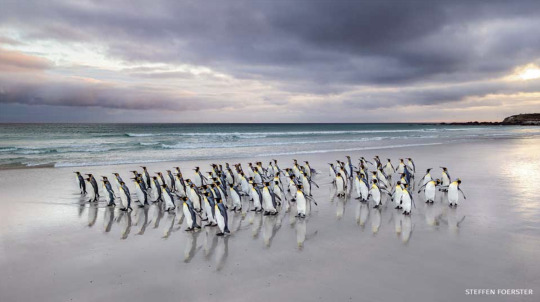
MOBILE, First Place, Steffen Foerster, Falkland Islands.
When Foerster of Sunnyside, New York, saw a colony of king penguins about to pass him on a Falkland Islands beach in December 2023, he had professional camera equipment at his fingertips. And yet, he reached for his cell phone with its ultrawide lens “for a much more expansive scene”—a split-second decision that caught “an unforgettable experience.”
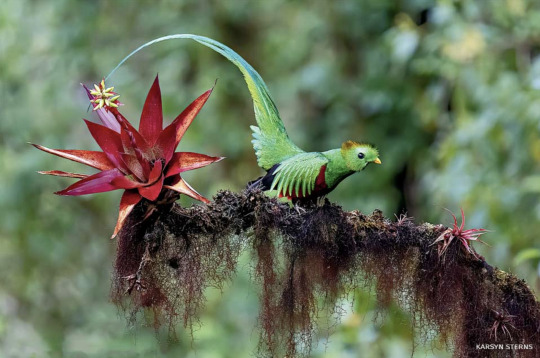
YOUNG NATURE PHOTOGRAPHERS, First Place, Karsyn Sterns, San Gerardo de Dota, Costa Rica.
Talk about a story arc: Accompanied by her dad, 13-year-old Sterns traveled to Costa Rica in March 2023 from her home in Dumfries, Virginia, with the goal of observing the aptly named resplendent quetzal. “I was especially happy to have seen and photographed this bird,” she says. We say, mission accomplished.
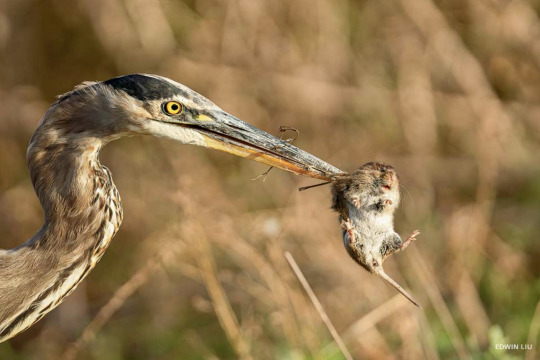
YOUNG NATURE PHOTOGRAPHERS, Second Place, Edwin Liu, Mississauga, Canada.
A friend told the budding photographer Liu, 17, that a great blue heron fished every evening in a Mississauga park. When Liu visited in October 2023 but didn’t see the bird within an hour, he grew restless and abandoned the park pond, only to encounter the bird in the bordering farmland. Ten minutes later, he watched the heron catch a vole. “When the heron hunts, it is indeed more patient than the photographer,” Liu says.

PORTFOLIO, First Place, Sonny Parker, Yukon, Canada.
While Dall sheep—native to alpine pockets of northwestern North America, from Canada’s British Columbia, Northwest Territories and Yukon up into Alaska—have evolved to stave off a host of predators, they now face a different threat: a rapidly changing climate. In the past, events such as lambing were timed precisely to optimal conditions, but as seasons become less predictable, “the sheep are struggling to stay synchronized,” says Parker, who lives in Haines Junction, Canada. In photos from May 2021 to January 2024, Parker documented the sheep throughout the year, including during winter, when the animals’ dense fur keeps them warm in temperatures as frigid as 40 below zero degrees F.
3 notes
·
View notes
Text

The ice bear cometh … by Andy Skillen, UK
It is a two-hour helicopter ride from the nearest town to this spot on the Fishing Branch River in Yukon, Canada, where the river never freezes. The salmon run occurs in late autumn here, and for grizzly bears this open water offers a final chance to feast before hibernating. It was averaging around -30C (-22F) and Andy had been waiting, hoping one particular female bear would use this log to cross. Eventually she did and he got the picture he’d envisioned – her wet fur had frozen into icicles and ‘you could hear them tinkle as she walked past’
Photograph: Andy Skillen/2021 Wildlife Photographer of the Year
4 notes
·
View notes
Text
Holidays 2.21
Holidays
Alka Seltzer Day
Armed Forces Day (South Africa)
Battle of Verdun Anniversary Day
Ben Appreciation Day
Break Up Day (India)
Card Reading Day
Communist Manifesto Day
Day of Naturism (Brazil)
Father Walter Lini Day (Vanuatu)
Find Out My Breast Density Day
Freedom of Worship Day (France)
International Mother Language Day (UN)
International Tourist Guide Day
John Lewis Day
King Harald V Day (Norway)
Kurt Cobain Day (Aberdeen, Washington)
Labor Day (Oregon; Original Date, 1st State Observance)
Language Movement Day (a.k.a. Shahid Dibosh; Bangladesh)
Locomotive Day
Martyrs Day (Bangladesh)
Matthiola Day (French Republic)
Mental Health Nurses Day (UK)
Musikahan Festival begins (Philippines) [thru 2.27]
Nascar Day
National Mourning Day (Bangladesh)
National Pillow on Head Day
National Waste Awareness Day (Indonesia)
New Yorker Magazine Day
Nina Simone Day (Tyron, North Carolina)
Presidential Succession Day
Red Books Day
Remember the Funniest Thing Your Child Ever Did Day
Robert Gabriel Mugabe National Youth Day (Zimbabwe)
Sandino Day (Nicaragua)
Sewing Machine Day
Single-Tasking Day
Telephone Book Day
Washington Monument Day
Food & Drink Celebrations
Drink It Now Day
National Biscuits & Gravy Day
National Boiled Peanuts Day
National Grain-Free Day
National Malört Day
National Sticky Bun Day
World Kombucha Day
Nature Celebrations
California Bluebell (Patriotic; Korean Birth Flowers)
International Skye Terrier Day
Independence, Flag & Related Days
Aulpannian Shatidom (Declared; 2021) [unrecognized]
Egypt (British Protectorate ended; 1922)
South Formosa (Declared; 2021) [unrecognized]
3rd Friday in February
Care Day (UK) [3rd Friday]
Comfort Food Friday [Every Friday]
Five For Friday [Every Friday]
Flashback Friday [Every Friday]
Fondue Friday [3rd Friday of Each Month]
Friday Finds [Every Friday]
Friendly Friday [3rd Friday of Each Month]
Fry Day (Pastafarian; Fritism) [Every Friday]
Global Divestment Day (UK) [Friday of Go Green Week]
Heritage Day (Yukon Territory, Canada) [3rd Friday]
National Caregivers Day [3rd Friday]
National Woman’s Heart Day [3rd Friday]
TGIF (Thank God It's Friday) [Every Friday]
World Porter Day [3rd Friday]
Weekly Holidays beginning February 21 (3rd Week of February)
National Chip Week [UK] (thru 2.28) [Last 7 Days]
Potahto Week (Winnipeg, Manitoba, Canada) [thru 3.1]
Festivals On or Beginning February 21, 2025
Adelaide Fringe (Adelaide, Australia) [thru 3.23]
Borderline Festival (Dublin, Ireland) [thru 2.22]
Carnaval de Ponce (Ponce, Puerto Rico) [thru 3.4]
Carnival of Tarragona (Tarragona, Spain) [thru 3.4]
Electric Avenue (Christchurch, New Zealand) [thru 2.22]
Fan Expo Vancouver (Vancouver, Canada) [thru 2.23]
Florida Gourd Arts Festival (Melbourne, Florida) [thru 2.23]
Great Lakes Ice Cream & Fast Food Trade Show & Convention (Battle Creek, Michigan) [thru 2.22]
Innings Festival (Tempe, Arizona) [thru 2.22]
Jerez Flamenco Festival (Jerez de la Frontera, Cadiz, Andalusia, Spain) [thru 3.8]
Mardi Gras! Galveston (Galveston, Texas) [thru 3.4]
Sandestin Gumbo Festival (Destin, Florida) [thru 2.22]
SF Beer Week (Bay Area, California) [thru 3.2]
St. Petersburg Seafood & Music Festival (St. Petersburg, Florida) [thru 2.23]
WBCA Jalapeño Festival (Laredo, Texas)
Western Farm Show (Kansas City, Missouri) [thru 2.23]
Feast Days
Blue Dragon Festival (China) [2nd Day of 2nd Lunar Month]
Boris Karloff Day (Church of the SubGenius; Saint)
Damian (Christian; Saint)
Daniel, priest, and Verde, virgin (Christian; Martyrs)
Day Sacred to the Goddess Muta (a.k.a. Laranda; Ancient Rome)
Double Second Day (China) [2nd Day of 2nd Lunar Month]
Feast of Peace and Love (Ancient Rome)
Felix of Hadrumetum (Christian; Saint)
Feralia (Old Roman Spirits Festival)
Feralia — Day of Purification (Pagan)
George of Amastris (Christian; Saint)
German and Randaut (Christian; Martyrs)
Germanus of Granfel (Christian; Martyr)
Horace (Positivist; Saint)
Jean Louis Ernest Meissonier (Artology)
Mathilda (Muppetism)
Pepin of Landen (Christian; Saint)
Peter Damian (Christian; Saint)
Randoald of Grandval (Christian; Saint)
Robert Southwell (Christian; Saint)
Seize a Sausage Day (Pastafarian)
Severianus, Bishop of Scythopolis (Christian; Saint)
Talk to a Goldfish Day (Pastafarian)
Yakuyoke Festival (a.k.a. Toshi-no-Matsuri; honoring Kami for bountiful rice harvest; Shinto)
Lunar Calendar Holidays
Chinese: Month 1 (Wu-Yin), Day 24 (Xin-You)
Day Pillar: Metal Rooster
12-Day Officers/12 Gods: Danger Day (危 Wei) [Auspicious]
Holidays: None Known
Secular Saints Days
W.H. Auden (Poetry)
Scrapper Blackwell (Music)
Frank Brunner (Art)
Leo Delibes (Music)
Hans Erni (Art)
Jonathan Safran Foer (Literature)
Kelsey Grammar (Entertainment)
Pyotr Konchalovsky (Art)
John Lewis (Politics)
Kumail Nanjiani (Entertainment)
Anais Nin (Literature)
Elliot Page (Entertainment)
Chuck Palahniuk (Literature)
Jordan Peele (Entertainment)
Sam Peckinpah (Entertainment)
Alan Rickman (Entertainment)
Nina Simone (Music)
David Foster Wallace (Literature)
Lucky & Unlucky Days
Fortunate Day (Pagan) [8 of 53]
Shakku (赤口 Japan) [Bad luck all day, except at noon.]
Umu Limnu (Evil Day; Babylonian Calendar; 9 of 60)
Premieres
Alice at the Rodeo (Disney Cartoon; 1927)
An Alpine Yodeler, featuring Farmer Al Falfa (Terrytoons Cartoon; 1936)
Anna Christie (Film; 1930
Avatar: The Last Airbender (Anime TV Series; 2005)
Babylon Revisited, by F. Scott Fitzgerald (Short Story; 1931)
Bottle Rocket (Film; 1996)
Bullwinkle Makes a Hit or I Get a Bang Out of You (Rocky & Bullwinkle Cartoon, S1, Ep. 25; 1960)
The Call of the Wild (Film; 2020)
Captains of the Clouds (Film; 1942)
The Cartoon Factory (Fleischer Out of the Inkwell Cartoon; 1924)
The Conqueror (Film; 1956)
Constellation (TV Series; 2024)
Dinky Doodle in Uncle Tom’s Cabin (Bray Cartoon; 1926)
Dragonsinger, by Anne McCaffrey (Novel; 1977)
Emma (Film; 2020)
The Fable of the Lion and the Mouse (Aesop’s Film Fable Cartoon; 1922)
Felix Fans the Flames (Felix the Cat Cartoon; 1926)
Fishing Made Easy (Terrytoons Cartoon; 1941)
The Gorilla Hunt (Color Rhapsody Cartoon; 1939)
Has Anybody Here Seen Kelly? (Fleischer Ko-Ko Song Car-Tune Cartoon; 1926)
The Hungry Wolf (MGM Cartoon; 1942)
Jerry and Jumbo (Tom & Jerry Cartoon; 1953)
Junkyard Run: Part 1 (WB Cartoon; 2002)
King of America, by Elvis Costello (Album; 1986)
Kiss Me Car (WB LT Cartoon; 1953)
Le Bœuf sur le Toit (The Bull on the Roof), by Darius Milhaud & Jean Cocteau (Ballet; 1920)
Lipstick on Your Collar (Film; 1993)
The Magic Fluke (Columbia Favorites Cartoon; 1957)
Magoo Goes Overboard (Mr. Magoo UPA Cartoon; 1957)
The New Statesman (Magazine; 1931)
The New Yorker (Magazine; 1925)
The Night Clerk (Film; 2020)
The Night Manager (TV Mini-Series; 2016)
9-1/2 Weeks (Film; 1986)
Old School (Film; 2003)
Peg-Leg Pete (Terrytoons Cartoon; 1932)
Pinkadilly Circus (Pink Panther Cartoon; 1968)
Pink Punch (Pink Panther Cartoon; 1966)
Polly’s Day at Home (Gaumont Cartoon Comics Cartoon; 1917)
Porky’s Cafe (WB LT Cartoon; 1942)
Real Time with Bill Maher (TV Series; 2003)
The Rich Cat and the Poor Cat (Aesop’s Film Fable; 1922)
Rock and Roll, by Led Zeppelin (Song; 1972)
Show Me the Way (Live Song; 1976)
Sloppy Jalopy (Mr. Magoo UPA Cartoon; 1952)
Suffering’ ’til Suffrage (America Rock Cartoon; Schoolhouse Rock; 1976)
Suited to a T (Fleischer Studio for India Tea; 1931)
Three on an Island or Tell It to the Maroons (Rocky & Bullwinkle Cartoon, S1, Ep. 26; 1960)
Tree Saps (Fleischer Talkartoon Cartoon; 1931)
Two for the Zoo (Fleischer Gabby Cartoon; 1941)
Washington Monument (National Monument Dedication; 1885)
The Wind Rises (Animated Studio Ghibli Film; 2014)
Yokel Boy Makes Good (Oswald the Lucky Rabbit Cartoon; 1938)
Today’s Name Days
Enrica, Gunthild, Petrus (Austria)
Damir, Natalija, Petar (Croatia)
Lenka (Czech Republic)
Samuel (Denmark)
Aavo, Auvo, Avo (Estonia)
Keijo (Finland)
Damien (France)
Enrica, Gunhild, Peter, Petrus (Germany)
Efstathios, Evstathios, Stathis (Greece)
Eleonóra (Hungary)
Eleonora, Leopoldo, Nora, Pier Damiani (Italy)
Eleonora (Latvia)
Eleonora, Feliksas, Kęstutis, Žemyna (Lithuania)
Celine, Samuel, Selma (Norway)
Eleonora, Feliks, Fortunat, Kiejstut, Teodor, Wyszeniega (Poland)
Eustatie, Timotei (Romania)
Eleonóra (Slovakia)
Pedro (Spain)
Hilding (Sweden)
Dallin, Doug, Douglas, Duff (USA)
Today’s National Name Days
National Nina Day
Today is Also…
Day of Year: Day 52 of 2025; 314 days remaining in the year
ISO Week: Day 5 of Week 8 of 2025
Celtic Tree Calendar: Nuin (Ash) [Day 24 of 28]
Chinese: Month 1 (Wu-Yin), Day 24 (Xin-You)
Chinese Year of the: Snake 4723 (until February 17, 2026) [Ding-Chou]
Coptic: 14 Amshir 1741
Druid Tree Calendar: Pine (Feb 19-28) [Day 3 of 10]
Hebrew: 23 Shevat 5785
Islamic: 22 Sha’ban 1446
Julian: 8 February 2025
Moon: 41%: Waning Crescent
Positivist: 24 Homer (2nd Month) [Horace)
Runic Half Month: Tyr (Cosmic Pillar) [Day 1 of 15]
Season: Winter (Day 63 of 90)
SUn Calendar: 22 Gray; Oneday [22 of 30]
Week: 3rd Week of February
Zodiac:
Tropical (Typical) Zodiac: Aquarius (Day 3 of 30)
Sidereal Zodiac: Aquarius (Day 9 of 30)
Schmidt Zodiac: Capricorn (Day 27 of 27)
IAU Boundaries (Current) Zodiac: Aquarius (Day 5 of 23)
IAU Boundaries (1977) Zodiac: Aquarius (Day 6 of 24)
Calendar Changes
Tyr (Cosmic Pillar) [Half-Month 5 of 24; Runic Half-Months] (thru 3.7)
2 notes
·
View notes
Text


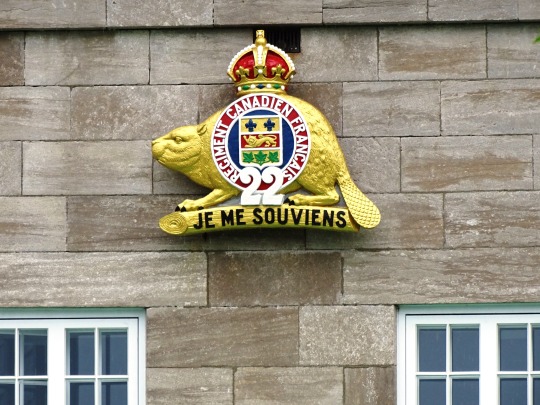
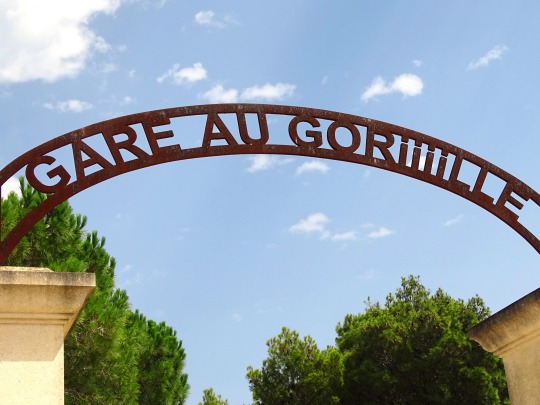










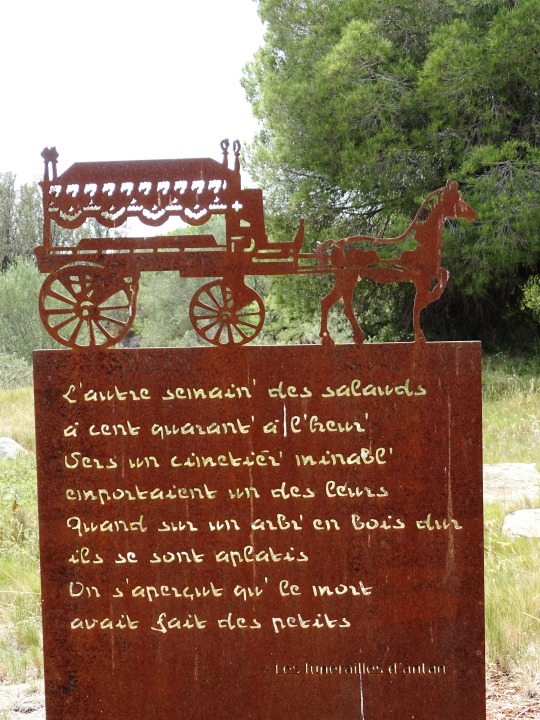





French Language Day
French Language Day is on March 20 and we’re more than excited to celebrate with some French culture, language, and history as we ask…parlez vous Francais? Even if you don’t speak the language there’s a lot of aspects of French culture to learn about. This occasion is meant to respect multilingualism and cultural diversity. When most people think of French they think of France, but it’s actually Africa that has the most French speakers. There are an estimated 120 million Africans from 29 countries that speak the language alongside their indigenous languages.
History of French Language Day
The French language comes from Vulgar Latin of the Roman Empire. France was known as Gaul during that time and they were conquered by the Romans in the first and second century BC. At that time, they spoke Gaulish which is a Celtic language, but that was replaced by Latin from the Romans. In the fifth century, Germanic tribes invaded Gaul and they were Romanized as well. As a result of these outside influences, modern French owes its origins to Celtic, Germanic, but most of all to Latin.
Old French was spoken by the ninth century to the thirteenth and it was different from Latin. The Oaths of Strasbourg is the oldest known document that uses Old French and it had varying dialects including Francien, a dialect that was used near Paris. In the fourteenth and sixteenth centuries, Middle French was used with expressions from Latin, Greek, and Italy. A group of French poets known as the Pléiade, inspired the French to strengthen their language and literature.
The seventeenth-century marked the modern period of French and in 1635, Cardinal Richelieu founded the French Academy. The purpose of this was to maintain the sanctity of the language and its literature. The language evolved over time with artistic movements like romanticism and realism, but in large, it has stayed true to this period.
In 2010, the UN’s Department of Public Information made French Language Day official to celebrate multilingualism and cultural diversity. The day is also used to promote the equal use of all six official languages throughout the UN which are Arabic, Chinese, English, French, Russian, and Spanish. March 20 is also recognized as the International Day of La Francophonie that celebrates the anniversary of the Agency for Cultural and Technical Cooperation (ACCT) that began March 20, 1970.
French Language Day timeline
2010 Language Days
French Language Day is made official by the UN to celebrate multilingualism.
1635 French Lit
Cardinal Richelieu founded the French Academy to maintain the sanctity of the language in literature.
842 The French of Old
The Oaths of Strasbourg is the oldest known document that uses Old French.
5th Century AD Epidemics
Gaul is conquered by the Roman Empire and the language Gaulish gives way to Latin.
French Language Day FAQs
What is World Language Day?
World Languages Day is a worldwide career expo that connects over 1,000 high school and college students to businesses and professions that value global skills.
Why do we celebrate Francophonie
International Day of La Francophonie celebrates the anniversary of the Agency for Cultural and Technical Cooperation that began March 20, 1970.
Do people in Canada speak French?
French is the mother tongue of an estimated 7.2 million Canadians, which is 20% of the population.
French Language Day Activities
Learn French
Have French cuisine
Join the discussion
French is known as one of the most romantic languages for a reason. Find out by trying it out for yourself! There are a plethora of French language learning guides online to practice with. You can make this a group activity and challenge a friend to try learning it as well and see how well you do in conversation with one another.
France is also known for its exquisite cuisine. Try your hand at cooking (and saying) some of the meals that they’re most known for. There’s soupe à l'oignon, cassoulet, chocolate soufflé, and more. If cooking isn’t your thing, you can go to an authentic French restaurant and share your experience with pictures on social media to spread the word.
The United Nations organizes dialogues all over the world as part of their UN75 initiative to hear from diverse groups about their hopes, fears, and experiences. Join the discussion by providing your own opinions, or listen to other voices to get a better grasp of global perspectives.
Five Facts About French Language Day
Recognized language
Social media ranking
Simplicity
Fast growth
Wide-spread
French was one of the first two working languages used by the United Nations.
French is the sixth most common language on the internet.
French is one of the easiest languages to learn for English speakers.
French isn't the most commonly spoken language, but it's a fast-growing language.
French is spoken on five different continents.
Why We Love French Language Day
It celebrates culture
Multilingualism is important
Know your French history
There’s no denying that the French language is a beautiful one. A long list of talented poets, writers, and artists are French and their works have lasted the test of time. By honoring the French Language Day, you also show respect to the hard-working artists that have put so much beauty out into the world.
French Language Day is a show of support for multilingualism and accepting diversity. The day reminds us to respect other communities and cultures and to act in cooperation with one another. Language can be a bridge between worlds.
Oftentimes, there are incorrect beliefs about a country, but you can never know the full story unless you investigate. France has an important history that has affected and has been affected by many other countries. We owe it to ourselves to understand these truths so that collectively we have a broader and more cultured mindset.
Source
#Aire de Fitou Est#Camaret-sur-Aigues#Henri Guisan#Avenches#France#Suisse#Schweiz#Switzerland#Waadt#Vaud#travel#vacation#summer 2021#original photography#cityscape#amphitheater#ruins#tourist attraction#landmark#architecture#Invitation to Travel by Maurice Savoie and Louis Barrette#Quebec City#Québec#Royal 22e Régiment#Citadelle of Quebec#FrenchLanguageDay#20 March#French Language Day#Vancouver#Yukon
0 notes
Text
U.S. daily high temperature records tied/broken 1/11/2025
Anchorage, Alaska: 42 (previous record 40 1989) Bettles, Alaska: 29 (also 29 1985) Caribou Peak summit, Alaska: 35 (also 35 2003) Chena River Recreation Area, Alaska: 36 (also 36 1984) Unincorporated Chugach Census Area, Alaska: 48 (also 48 1931) Unincorporated Copper River Census Area, Alaska: 38 (previous record 34 1989) Unincorporated Copper River Census Area, Alaska: 39 (previous record 36 1949) Fairbanks, Alaska: 31 (also 31 1985) Unincorporated Fairbanks North Star Borough, Alaska: 40 (previous record 31 1997) Unincorporated Fairbanks North Star Borough, Alaska: 37 (previous record 0 1997) Unincorporated Fairbanks North Star Borough, Alaska: 42 (previous record 37 1984) Unincorporated Fairbanks North Star Borough, Alaska: 35 (previous record 0 1997) Unincorporated Fairbanks North Star Borough, Alaska: 41 (previous record 39 1997) Kenai National Wildlife Refuge, Alaska: 41 (also 41 2016) Unincorporated Kodiak Island Borough, Alaska: 46 (previous record 45 2012) Unincorporated Matanuska-Susitna Borough, Alaska: 45 (also 45 1997) Noatak National Preserve, Alaska: 33 (previous record 30 2024) Unincorporated Nome Census Borough, Alaska: 34 (previous record 0 2007) North Pole, Alaska: 30 (previous record 29 2021) Pelican, Alaska: 42 (also 42 2016) Unincorporated Southeast Fairbanks Census Area, Alaska: 40 (previous record 33 2021) Unincorporated Southeast Fairbanks Census Area, Alaska: 30 (previous record 24 2021) Unincorprated Southeast Fairbanks Census Area, Alaska: 41 (previous record 35 1984) Yakutat, Alaska: 47 (previous record 46 1981) Unincorporated Yukon-Koyukuk Census Area, Alaska: 13 (previous record 11 2015) Unincorporated Kings County, California: 70 (previous record 66 2015) Oakland, California: 71 (previous record 68 1983) San José, California: 69 (also 69 1959) San Rafael, California: 69 (also 69 1953) Unincorporated Tulare County, California: 72 (also 72 1959) Unincorporated Tuolumne County, California: 67 (also 67 2012) Wasco, California: 76 (previous record 74 2018) Wake Island, Marshall Islands: 87 (also 87 2002) Sand Island, Midway Atoll: 77 (previous record 76 1988) Deschutes National Forest, Oregon: 42 (previous record 41 2009) Mt. Rainier National Park, Washington: 50 (previous record 49 2010)
2 notes
·
View notes
Note
could you do a little team canada primer? i want to know the narratives!
let's start with the ships!
bo and dylan: once upon a time kirby dach broke his wrist and dylan cozens and bowen byram were consequently elevated from As to co-captains of the 2021 world juniors team. team canada lost to trevor zegras's insufferable americans in the gold medal game, and bo spent the medal ceremony weeping uncontrollably, and dylan tenderly cradled his head and comforted him. then bo went to visit dylan in the yukon, which is exactly where you'd expect a reclusive vampire and a sensitive werewolf to fall in love.
bedsy and zelly: they were roommates at world juniors and here is a video where bedsy says, “he’s got one of the best bodies i’ve ever seen." catfish mouth olen zellweger my beloved.
other fun items of note!
adam fantilli revenge tour: adam's one and only wjc appearance was marred by the canadian media and even his own teammates unfairly blaming him for the entire team's failings. he and bedsy both tried lacrosse goals but the media only got mad at adam. he was demoted to the fourth line and his teammates chirped him about being a fake canadian. (recall the canadian shitstorm ignited by 14yo adam's decision to go play prep school/ushl/ncaa hockey instead of being a good little OHL soldier.) it was rough enough that he came back to umich with a chip on his shoulder about it for the second half of the season (per naur.) i did not include all the links in this paragraph but feel free to peruse my blog starting on boxing day 2022, where i lost my mind about this topic. the point is that team canada and adam have had kind of a fraught relationship and it's always interesting to see how he's treated and how he performs when he's got a maple leaf on his chest.
unhaunted nolan patrick: celebrini, another canadian who went the ncaa route, does not seem to inflame canadian emotions the way that adam does, probably because he (a) never played in canada in the first place, and (b) is not from the greater toronto area. i look forward to getting some glimpses of personality from this tournament.
spicy dyl: once upon a time when the thunderbirds played the oil kings, reid schaefer memorably chirped dylan guenther by calling him spicy dyl (which some girl had apparently tweeted at him). a year later dylan got traded to the t-birds and i became the world's only reid schaefer/dylan guenther shipper. spicy dyl was once asked for his thoughts on lacrosse goals and said, "if you tried that in the western, you'd get your teeth knocked in." he's my favorite antagonist.
owen power: the biggest pup in the litter is back! it seems like guys who sign on for men's worlds are either players who've had a disappointing season and are looking for some redemption (note all the kraken on this roster) or younger guys who want an opportunity to get on the radar. owen probably falls in the former bucket, and that's going to make him interesting to watch. it will also be interesting to see which defenseman on this roster is the scratch.
#anonymarshmallow#i saw a rumor today that mac t might get added to this roster and let me assure you i will lose my goddamned mind if that happens
15 notes
·
View notes
Text
Coasters on Previous Years' Lists
List of coasters on the prompt lists from 2020-2023, alphabetical by park name!
Adventureland
Dragon (2021)
Monster (2022)
Outlaw (2023)
Alton Towers
Galactica (2022)
Oblivion (2021)
Smiler (2020)
Wicker Man (2023)
Blackpool Pleasure Beach
Icon (2021)
Busch Gardens Tampa
Cobra’s Curse (2022)
Iron Gwazi (2021)
Kumba (2020)
Montu (2023)
Busch Gardens Williamsburg
Alpengeist (2022)
Pantheon (2021)
Verbolten (2023)
California’s Great America
Gold Striker (2020)
RailBlazer (2023)
Canada’s Wonderland
Bat (2023)
Behemoth (2022)
Leviathan (2020)
Yukon Striker (2021)
Carowinds
Copperhead Strike (2020)
Fury 325 (2021)
Nighthawk (2022)
Cedar Point
Corkscrew (2022)
GateKeeper (2023)
Millennium Force (2020)
Steel Vengeance (2021)
Chessington World of Adventures
Dragon’s Fury (2022)
China Dinosaurs Park
Dinoconda (2021)
Dollywood
Lightning Rod (2020)
Thunderhead (2022)
Dorney Park
Steel Force (2023)
Drayton Manor
Shockwave (2022)
Efteling
Baron 1898 (2021)
Vliegende Hollander (2023)
Joris en de Draak (2022)
Energylandia
Zadra (2020)
Europa Park
blue fire (2023)
Silver Star (2022)
Wodan (2020)
Farup Sommerland
Fonix (2022)
Ferrari Land
Red Force (2021)
Fuji-Q Highland
Do-Dodonpa (2020)
Eejenika (2022)
Fujiyama (2021)
Takabisha (2023)
Fun Spot Atlanta
ArieForce One (2023)
Hansa Park
Flucht von Hovgorod (2023)
Karnan (2020)
Heide Park
Colossos (2022)
Krake (2023)
Hersheypark
Candymonium (2020)
Skyrush (2021)
Wildcat’s Revenge (2023)
Holiday Park
Expedition GeForce (2021)
Holiday World
Voyage (2020)
Indiana Beach
Steel Hawg (2021)
Islands of Adventure
Velocicoaster (2022)
Kennywood
Phantom’s Revenge (2020)
Steel Curtain (2021)
Kentucky Kingdom
T3 (2020)
Kings Dominion
Intinidator 305 (2020)
Twisted Timbers (2022)
Volcano (2023)
Kings Island
Beast (2020)
Mystic Timbers (2021)
Orion (2023)
Racer (2022)
Knott’s Berry Farm
GhostRider (2022)
HangTime (2020)
Silver Bullet (2023)
Xcelerator (2021)
Knoebels
Impulse (2022)
Phoenix (2020)
Kolmarden
Wildfire (2020)
Liseberg
Helix (2020)
Marineland
Dragon Mountain (2022)
Motiongate
Dragon Gliders (2023)
Nagashima Spa Land
Hakugei (2021)
Steel Dragon 2000 (2020)
Nanchang Sunac Land
Coaster Through the Clouds (2022)
Oakwood
Speed (2021)
Parc Asterix
Toutatis (2023)
Phantasialand
F.L.Y. (2023)
Taron (2020)
Winja’s (2022)
Plopsaland De Panne
Ride to Happiness (2023)
PortAdventura Park
Dragon Khan (2022)
Shambhala (2021)
Sea World Australia
Leviathan (2023)
Sea World Orlando
Ice Breaker (2020)
Mako (2021)
Sea World San Antonio
Texas Stingray (2021)
Silver Dollar City
Time Traveler (2020)
Silverwood
Aftershock (2023)
Six Flags Fiesta Texas
Dr. Diabolical’s Cliffhanger (2023)
Six Flags Great Adventure
El Toro (2022)
Jersey Devil (2021)
Kingda Ka (2020)
Nitro (2023)
Six Flags Great America
Maxx Force (2021)
Six Flags Magic Mountain
Full Throttle (2023)
Goliath (2020)
Twisted Colossus (2022)
X2 (2021)
Six Flags Mexico
Medusa (2021)
Six Flags New England
Wicked Cyclone (2022)
Six Flags Over Georgia
Blue Hawk (2022)
Thorpe Park
Colossus (2020)
Nemesis Inferno (2022)
Stealth (2021)
Swarm (2023)
Tobu Zoo Park
Kawasemi (2022)
Tokyo Dome City
Thunder Dolphin (2020)
Universal Studios Florida
Rip Ride Rockit (2021)
Universal Studios Japan
Flying Dinosaur (2023)
Walibi Belgium
Kondaa (2021)
Walibi Holland
Untamed (2020)
10 notes
·
View notes
Text

INDIAN OCEAN (Oct. 18, 2021) – Japan Maritime Self-Defense Force Izumo-class multi-purpose operation destroyer JS Kaga (DDH 184) conducts an underway replenishment with Henry J. Kaiser-class underway replenishment oiler USNS Yukon (T-AO 202) in the Indian Ocean Oct 18. Yukon provides U.S. Navy, allies’ and partners’ ships operating in the 7th Fleet area of operations with critical supplies, including fuel, food and spare parts. As the U.S. Navy's largest forward-deployed fleet, 7th Fleet employs 50-70 ships and submarines across the Western Pacific and Indian Oceans. U.S. 7th Fleet routinely operates and interacts with 35 maritime nations while conducting missions to preserve and protect a free and open Indo-Pacific Region. (Photo by Capt. Daniel Glazier)
See less
17 notes
·
View notes
Text
Yukon's emissions rose in the first year of Our Clean Future, the territorial government's climate change plan, but officials say the plan is nevertheless starting to work.
The government released its annual report for Our Clean Future on Wednesday. The report says the territory's emissions rose by seven per cent over 2010 levels in the first year of the plan (emissions data is from 2021, the most recent available), but there are some caveats.
Exclude the mining industry, and emissions rose just under one per cent. John Streicker, minister of Energy, Mines and Resources, acknowledged counting mining emissions separately from the broader economy might seem counterintuitive. But he said the idea is to avoid taking credit for slashing emissions in the event the mining industry goes bust.
"Does the climate care? No. The climate cares about emissions, period," he said.
"[But] we think it is more transparent, more accountable to treat it distinctly and to show that up-and-down, and not use it to our advantage as a government if there is a slowdown in mining," he said. [...]
Continue Reading.
Tagging: @politicsofcanada
31 notes
·
View notes